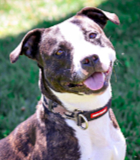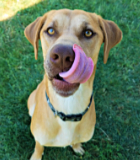Puppy Preparedness
- This topic has 0 replies, 1 voice, and was last updated 16 years, 2 months ago by
Mackenzie’s Admin.
-
AuthorPosts
-
February 26, 2009 at 11:11 pm #367
Mackenzie’s Admin
MemberReadying the Home for a New Canine Arrival
Bringing home a new puppy is truly one of life’s joys. Thoughtful pre-puppy preparations and a well-planned first 24 hours can give your fuzzy bundle of promise a head start and make your dreams of the perfect family dog come true.
Before the Big Day
Once household discussions have established that everyone wants a dog of a certain age and breed, where to get the pup—from a shelter or reputable breeder—is more or less determined. Now, family meetings should cover scheduling:– Who will take the pup to the papers or backyard and when?
– Who will be in charge of feedings three to four times a day?
– Who will make veterinary appointments for vaccinations and deworming?Also, take time to create a vocabulary list everyone will use. If Mom says "down" when Puppers climbs on the couch, Dad says "down" when he wants him to lie down, and Junior utters "sit down" when he expects the pup’s rear to hit the floor, the result will be one confused dog! Putting the schedule and vocabulary list in writing prevents confusion and will help dog walkers, nannies, and others involved in raising Puppers.
Next, draft a shopping list and purchase supplies: food and water bowls, chew toys, grooming supplies, bedding, collar and leash, identification tag, crate, gate, and odor neutralizer. Pre-puppy shopping allows you to order from wholesale catalogs or visit the pet superstore in the next county without the pressure of Puppers needing it right now.
You’ll need to puppy-proof the area where the youngster will spend most of his time the first few months. This may mean taping loose electrical cords to baseboards; storing household chemicals on high shelves; removing plants, rugs, and breakables; setting up the crate; and installing gates. Once you think you’ve completely puppy-proofed, lie on the floor and look around once more to get a puppy’s-eye view.
If you have children, hold one last meeting to lay down the rules: Don’t overwhelm Pup the first day, and don’t fight over him or create mob scenes showing him to the neighborhood. Now you’re off to get Puppers.
Getting Off on the Right Paw
When you pick up your pup, remember to ask what and when he was fed. Replicate that schedule for at least the first few days to avoid gastric distress. If you wish to switch to a different brand, do so over a period of about a week by adding one part new brand to three parts of the old for several days; then switch to equal parts; and then one part old to three parts new.From the start, consistency is important. On the way home, Puppers should ride in the back seat, either in one person’s arms or, preferably, in a crate or carrier.
Once home, folks who plop the excited newcomer on the Oriental and let the kids chase him will be mopping up in no time—and regretting the lesson they taught their new pup. Instead, take him to his toileting area immediately.
From there, carry out your schedule for feeding, toileting, napping, and play/exercise. From Day One, your pup will need family time and brief periods of solitary confinement. Solitude may be new to Puppers, so he may vocalize concern. Don’t give in and comfort him or you may create a monster. "Gee, if making noise brought them running once, maybe more whimpering is needed to get their attention again," reasons the pup. Give him attention for good behavior, such as chewing on a toy or resting quietly.
Doing things correctly from the start prevents confusion. Through puppy preparedness, you are one step closer to your Dream Dog.
By Jacque Lynn Schultz, CPDT
Companion Animal Programs Advisor
ASPCA National Shelter Outreach -
AuthorPosts
- You must be logged in to reply to this topic.











































